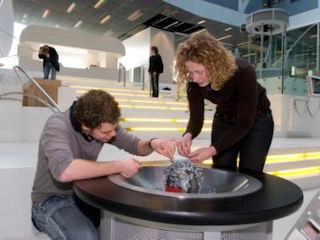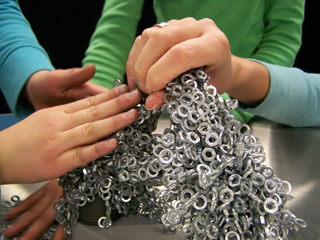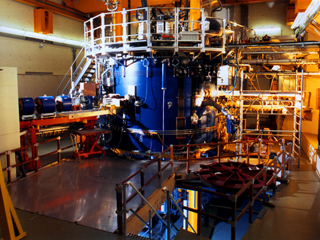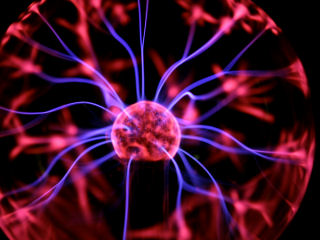Magnetic masterpieces
The phenomenon of magnetism has been extensively researched and utilized since the ancient Greeks discovered that natural magnets can attract metals. Today we cannot do without magnets. If there was no such thing as magnetism, there would be no computers, no radios, no MRI devices and no magnetic sculptures in Science LinX.

Artful magnets
At the magnetism display in the Science LinX exhibition you can make your own creation with a stack of shiny chips. The magnet moves the chips (and other iron objects in the vicinity!) with its magnetic field. Iron objects in a magnetic field are inclined to orient themselves in the same direction, the direction in which the magnetic field is strongest. You can see and feel this while you’re creating magnetic masterpieces in Science LinX.

Magnetic fields
What’s special about magnetic fields is that they exercise a force on electrically charged, moving particles. This force, the so-called Lorentz force, increases with the particles’ charge, speed and – of course – the strength of the magnetic field. The Lorentz force can be used to accelerate charged particles in a magnetic field.

Research in Groningen
The AGOR cyclotron at the KVI (Kernfysisch Versneller Instituut) in Groningen is based on the principle of the Lorentz force. This particle accelerator comprises two semicircles through which a magnetic field is passed. A charged particle (such as a proton) is forced to spiral in a circular trajectory inside the semicircles. The Lorentz force is what keeps the particle in its trajectory. The two halves of our particle accelerator form the alternating poles of a magnet which take turns to attract the particle and then accelerate it away. AGOR can actually accelerate charged particles almost up to the speed of light!

Fundamental forces
These rapidly moving charged particles are used by atomic and nuclear scientists to discover how the most fundamental forces, such as strong and weak nuclear forces, behave in the natural environment. In other words, at the AGOR cyclotron they cleverly apply one fundamental force to find out more about another!
Colophon
Special thanks to: Hüttinger Exhibition Engineering and Dr Gerco Onderwater. Please contact Science LinX if you should have been included in the acknowledgements.
Author
Siëlle Gramser
| Last modified: | 14 December 2020 2.03 p.m. |

